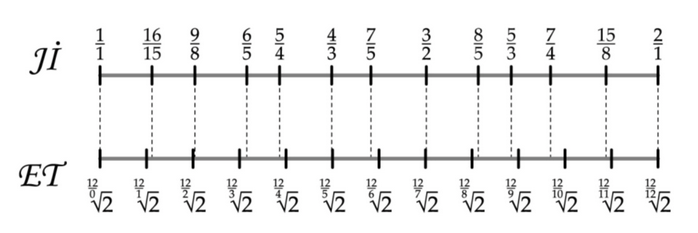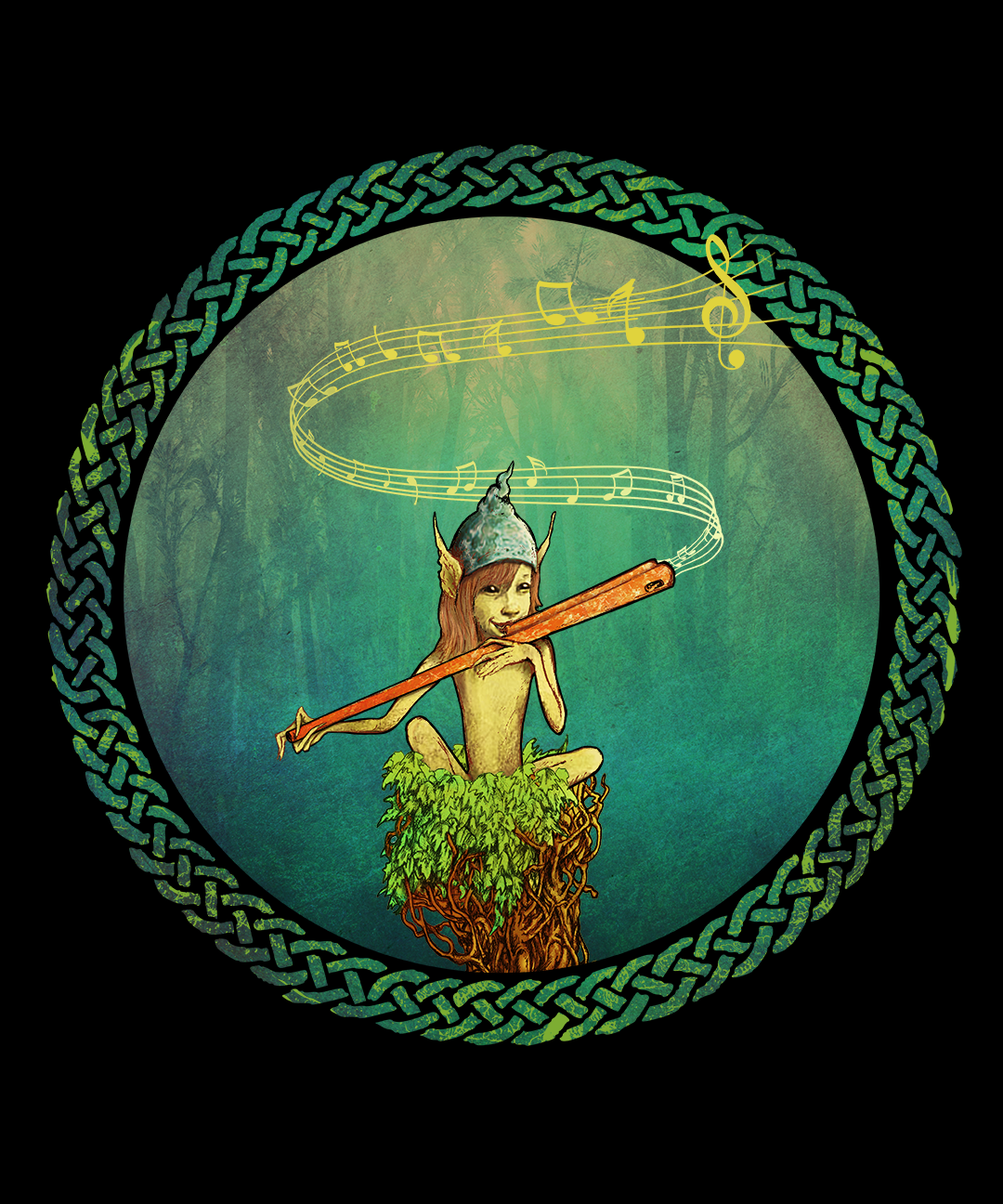What is Holistic Music Therapy?
Main Principles
Why just listening to any music doesn’t help?
The therapeutic effect of music is not automatic, we listen to some music almost constantly, but it does not have a significant effect on our health.
So what are the main conditions for achieving a therapeutic effect?
Above all, it is so-called
Just Intonation
Tuning system that mimics sounds in nature (birds singing, water rushing in a stream or wind rustling in the treetops)
What is this “Just Intonation” about?
Distances between individual tones are given by ratios between small integers, thus distances between individual tones and semitones are different.
Differences between tone intervals in Just Intonation
As we can see from this chart, positions of single tones and semi-tones are slightly different than the equipartition of cents in the line below.

On the other hand, the standard music we are used to (any, from classical music, jazz, country, rock and roll to heavy metal) uses so-called tempered tuning, where the distances between the individual semitones are created so that the octave is divided into 12 completely identical intervals (each has so-called 100 cents)
This tunning system enables musicians to compose complex harmonies and combine melodies and they can switch between different keys at the same instrument easily. They can even tell stories through the emotional charge which is always included in musical art. An audience can feel excitement, sadness, fear or any emotion that a composer intends. This is the reason why almost everyone likes music because it is like watching a movie full of exciting situations and thrilling action. However, the purpose of music therapy is different.
Difference between Just Intonation (JI) and Equal Temperament tunning (ET)
This chart demonstrates the differences between the tones in the system of “Equal Temperament” tunning (ET) and “Just Intonation” (IT). As we see, the closest tones in both systems are the octave (the same ratio) and the perfect fifth (4/3). The difference is only a couple of cents.

If we wanted to compose and write more complex music in truly “just intonation”, then it would be very complicated, because we would be able to divide the octave into an infinite number of tones, which is difficult to reproduce and, above all, to coordinate with other players. But if we stick to simple intervals, which are composed of fractions of really small numbers (octave, tritone, major third), then we achieve the real harmonic intervals, which are connected with positive emotions (as major scale) and their impact is soothing and healing. The disadvantage of this system (compared to tempered tuning) is that the music therapy instruments are always tuned in only one key and it is not possible to play in another key as is common with ordinary musical instruments.
What does it mean to us?
Therapeutical instruments are not versatile, they can be used only in the key as they are tuned. We can easily play the piano or guitar eg. in C major as well as in D (or another key). But if we have a music therapy flute tuned in the natural tuning on the D scale, then it is not possible to play with someone who has an instrument tuned in C.
The mentioned harmonic intervals (octave, tritone and major third) are closest to the frequencies of tempered tuning, so in these few places it is possible to combine the sound of standard musical instruments with music therapy even for artistic experimentation. However, due to the fact that their harmony is slightly out of tune (the difference is in units of cents), the organism perceives this difference without being noticed by the human ear, so the healing potential of such combined music disappears.
Let’s see the tiny differences between single tones in both systems.
We can rely on octaves which have the same frequencies in both systems. The perfect fourth and perfect fifth have very little difference (2,-2 cents). The Major seventh and minor second are also quite close (4,-4 cents). This is the possible way how to combine standard instruments with music therapy instruments for artistic purposes because the human ear is not able to distinguish such a tiny difference but the healing potential disappears.

Thus, music therapy music uses natural tuning and the most harmonic intervals for its production, which are close to sounds and the vibrations of these intervals resonate with the human body and have the potential to heal. Therefore, music therapy music is not and cannot be too sophisticated and must not contain any disturbing-sounding intervals that evoke tension or emotion, which, on the contrary, is the intention of artistic music production. The most commonly used chords in music therapy are on the major scales because they evoke positive, joyful emotions
The second component is
Frequency 432Hz
Standard tempered music is usually tuned to 440Hz (tone A). However, some theories show that a more suitable tuning for relaxation and healing is 432 Hz, which is in harmony with the frequencies of sounds in nature.
To verify these assumptions, a study was conducted in 2019 by two Italian researchers, Diletto Calamassi and Gian Paolo Pomponi, which showed that music tuned in this way has a positive effect on heart activity. https://doi.org/10.1016/j.explore.2019.04.001

The third prerequisite is
Rhythm
An important part of music therapy music is also the rhythm that evokes a certain meditative component of the therapist’s music production. In music therapy, we choose simple, repetitive rhythms without the decorative elements that we can see in standard music. The goal of repetition is to get clients into a meditative state, ie to activate longer alpha or theta brain waves, which will allow the body to switch to a relaxing, self-healing mode.
Let’s summarize…
So, the difference between standard music and therapeutic music is in its purpose. Standard music is artistic and it is supposed to bring excitement through an emotional journey by using complex rhythms and melodies that evoke a certain emotional wave which can even turn into a roller coaster. Conversely, therapeutic music leads us to a changed state of mind which enables our body to start a self-healing process. The tools for this purpose are simple melodies in perfect natural harmonies and simple repetitive rhythm patterns releasing an inner tension in our minds.


